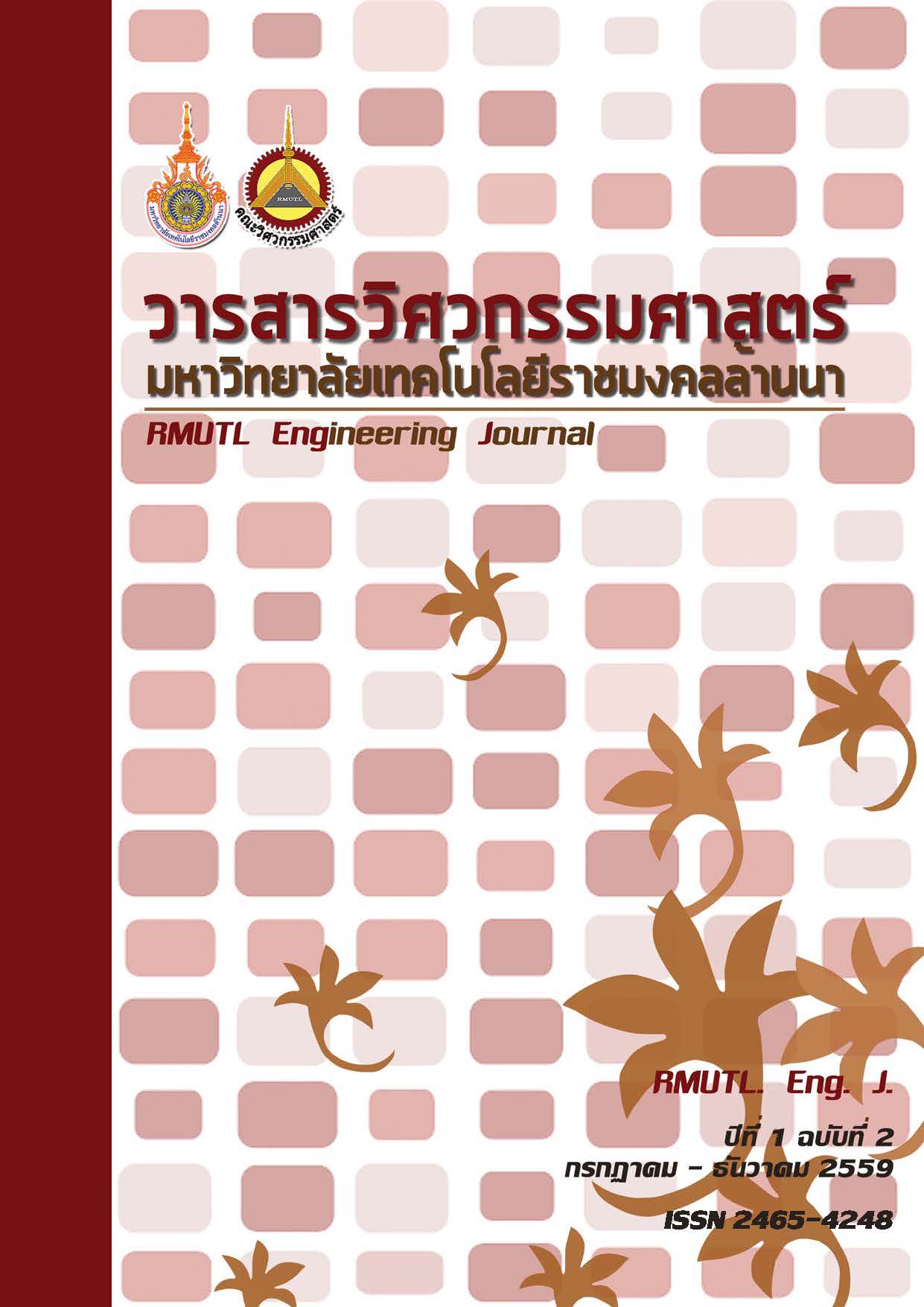Development of Solar Energy Evaluation at Various Direction and Tilt with Correlation Method with Fractal Dimension Technique : Clear Sky Condition
DOI:
https://doi.org/10.14456/rmutlengj.2016.15Keywords:
solar energy, correlation, fractal dimensionAbstract
Thailand government has been a policy for solar photovoltaic rooftop (PVRT) such as household and factory building. Normally, the household and factory have had mention designed for living, functioning and comforting respectively by consumer. For this reason, the direction and title of almost building is hard to receive the maximum solar energy through the year. The design of PVRT for generate the electrical energy had related with solar energy directly. This article proposes the development of solar energy evaluation atvarious direction and tilt with regression analysis method with fractal dimension technique. The 24 silicon pyrometers have been development in range 400-1100 nm and have been installed at 8 directions and 3 angles such as 20, 30 and 40 degree respectively on latitude 18.43 N, longitude 98.78 E and 600 meters above mean sea levels. The data acquisition had applied to collect the data at one minute interval. The fractal dimension technique was functional in clear sky condition and correlation factor technique was applied in this article. We found that the clear sky condition can be applied the least square equation for estimate the solar energy at various direction and title and had 0.92 correlation factor. The south direction at 40 degree had the highest solar energy in duration the February to March.
References
2. Chang Y-P. Optimal the tilt angles for photovoltaic modules in Taiwan. JEPE.2010;32(9):956-64
3. Beringer S, Schilke H, Lohse I, Seckmeyer G. Case study showing that the tilt angle of photovoltaic plants is nearly irrelevant. SOL ENERGY.2011;85(3):470-6
4. Hussein H.M.S, Ahmad G.E, Ghetany H.H.EL. Performance evaluation of photovoltaic modules at different tilt angle and orientations. ENERG CONVERS MANAGE.2004; 45(15-16):2441-51
5. John A.D. and William A.B. (1980). Solar Radiation,Solar Engineering of Thermal Processes. John Wiley and Sons Inc., New York
6. John O.R, Sastry G.P, David A.D. Applied Regression Analysis; A Research Tool. Springer;1998.
7. Samia H. Modeling Solar Radiation at the Earth’s Surface. In: Fractal Classification of typical meteorological days from global solar irradiance:Application to five sites of different climate. Springer;2008. p29-53










